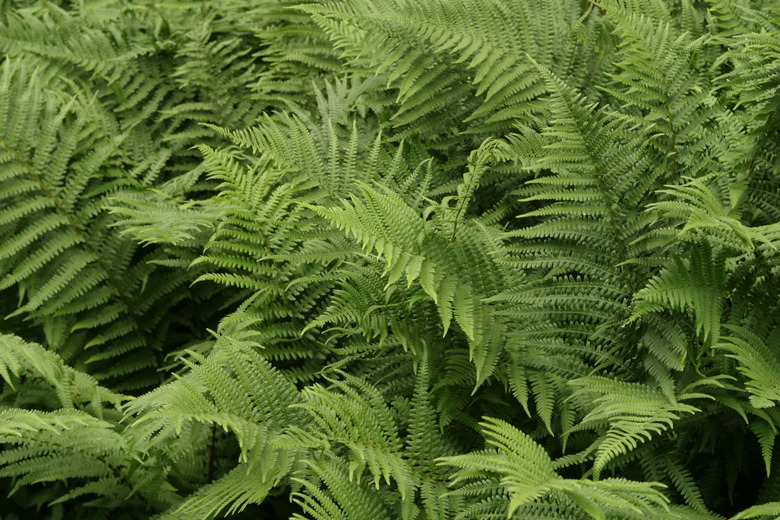List Of Seedless Vascular Plants
What are some examples of seedless vascular plants? An important group in the evolution of land plants, seedless vascular plants species include many types of ferns, club mosses, whisk ferns and horsetails.
There are three types of vascular plants that do not make flowers or seeds: phylum Lycopodiophyta (club mosses), phylum Monilophyta: class Equisetopsida (horsetails) and phylum Monilophyta: class Psilotopsida (whisk ferns and ferns). Seedless vascular plants belong to a large group known as Biology(OpenStax'>tracheophytes/5%3A_Biological_Diversity/25%3A_Seedless_Plants/25.4%3A_Seedless_Vascular_Plants), or plants that have vascular tissue, which is specialized tissue like xylem and phloem that moves water and nutrients. They are also characterized by the fact that the dominant phase of their life cycle is the diploid sporophyte.
Club Mosses – Phylum Lycopodiophyta
Club Mosses – Phylum Lycopodiophyta
Among the earliest group of tracheophytes, there are about 1,200 species of club mosses. Not to be confused with true mosses, which are classified as bryophytes due to their lack of vascular tissues, club mosses often look like their small green relatives and grow in similar habitats.
Club mosses are an example of seedless vascular plants that have survived thousands of years. During the Carboniferous period, large species of club moss trees grew in giant swamps and forests. Having adapted to evolving conditions on the planet, club mosses are now much smaller organisms, most measuring only inches in height.
However, since club mosses have vascular tissues, they mark an important step in the transition from aquatic habitats to land. They have roots to anchor them to dry land, but they still depend on the presence of water for reproduction, like their true moss relatives.
Horsetails – Class Equisetopsida
Horsetails – Class Equisetopsida
Phylum Monilophyta includes the rest of the vascular seedless plants: horsetails, whisk ferns and ferns. However, horsetails belong to class Equisetopsida, while ferns and whisk ferns are members of class Psilotopsida.
There is only one extant – or currently living – genus of horsetails left on the planet. All of the surviving species of horsetails belong to the genus Equisetum, which was a large group at one time in history and included some large tree species. All we have left now of those extinct species is the fossil record.
Extant species of horsetails number about 15 across the globe. They tend to grow in wet environments, like bogs and marshes. With obvious joints in their stems, the leaves of horsetails are arranged in whorls around the stems.
Whisk Ferns and Ferns – Class Psilotopsida
Whisk Ferns and Ferns – Class Psilotopsida
With their familiar forms and large fronds, ferns are often found growing in shady forests or mossy bogs. There are over 20,000 species of ferns, which grow in climates all over the world. Considered by botanists to be the most developed seedless vascular plants, many ferns grow root-like structures called rhizomes and others, called tree ferns, develop trunk-like structures above ground.
The presence of vascular tissue in ferns allows them to grow much larger than non-vascular plants like mosses. This represents an evolutionary advantage, as vascular tissue also helps provide strength and structure, so ferns can grow much taller and develop larger structures to capture sunlight. Wide green fronds absorb light necessary for photosynthesis, the process that plants use to make their own food.
Whisk ferns, a close relative of true ferns, have adapted differently from their large-fronded relations. While whisk ferns have vascular tissues, they do not have roots or leaves. The cells in the stems of whisk ferns perform photosynthesis, an efficient arrangement for these small, primitive plants. Sometimes growing as an epiphyte, a plant that grows on another plant, whisk ferns appeared on the planet before dinosaurs and continue to live all over the world today.
Cite This Article
MLA
Sloane, Christina. "List Of Seedless Vascular Plants" sciencing.com, https://www.sciencing.com/list-seedless-vascular-plants-5811189/. 1 December 2021.
APA
Sloane, Christina. (2021, December 1). List Of Seedless Vascular Plants. sciencing.com. Retrieved from https://www.sciencing.com/list-seedless-vascular-plants-5811189/
Chicago
Sloane, Christina. List Of Seedless Vascular Plants last modified March 24, 2022. https://www.sciencing.com/list-seedless-vascular-plants-5811189/
